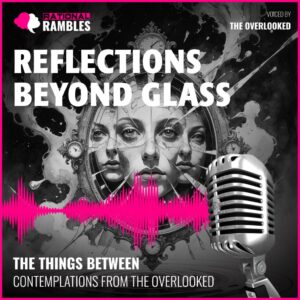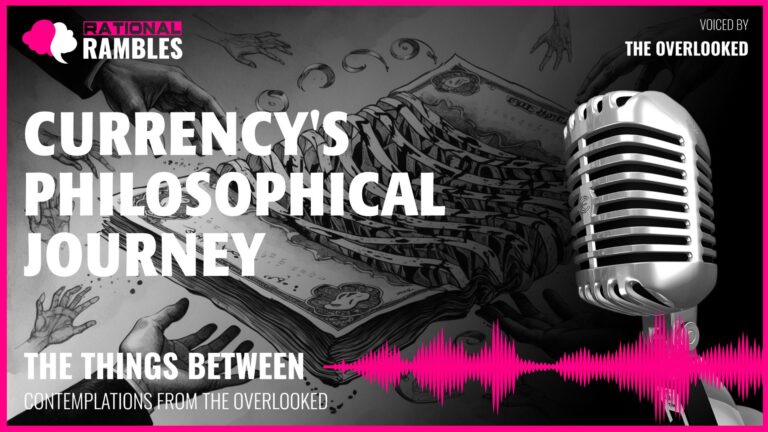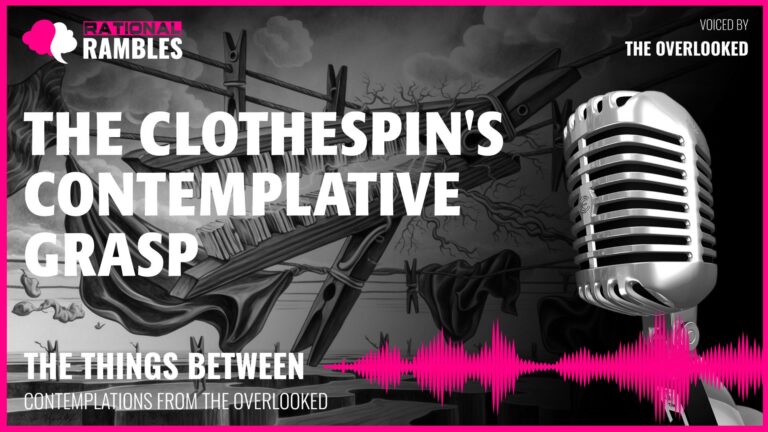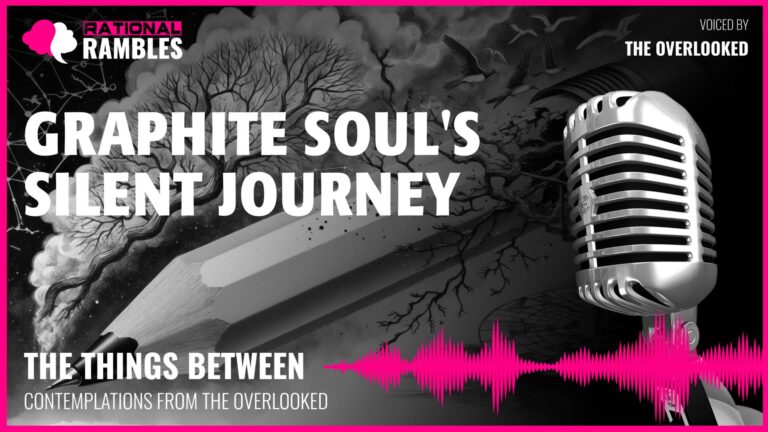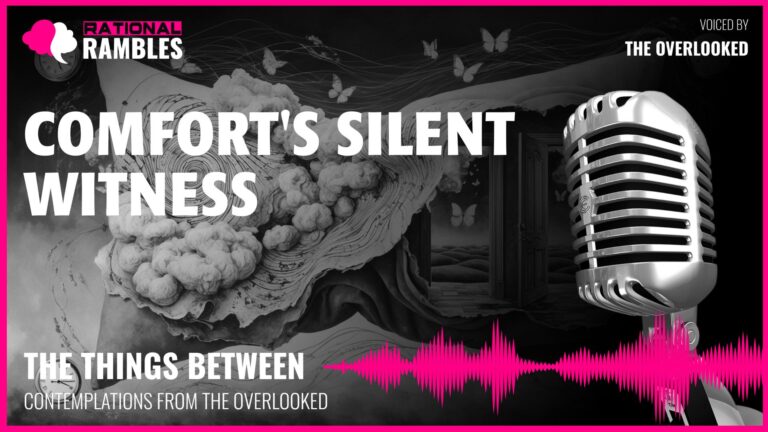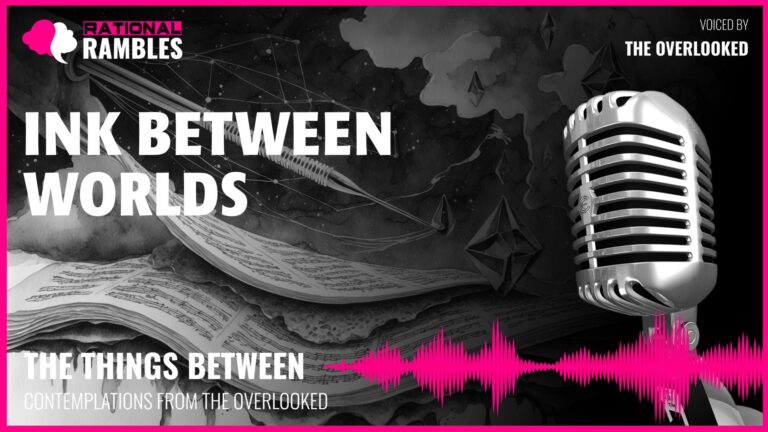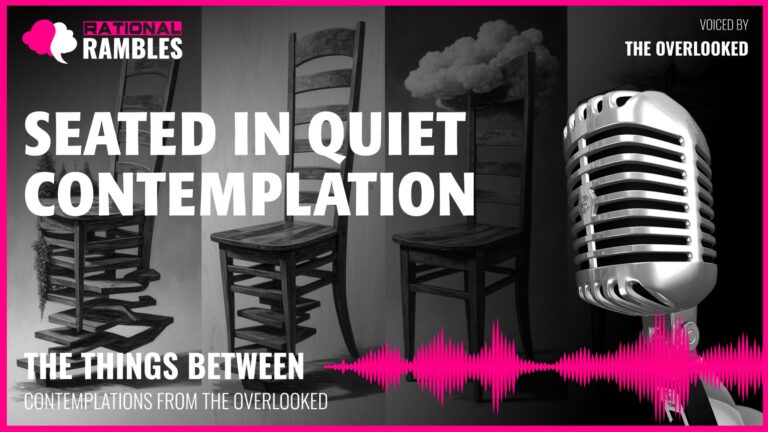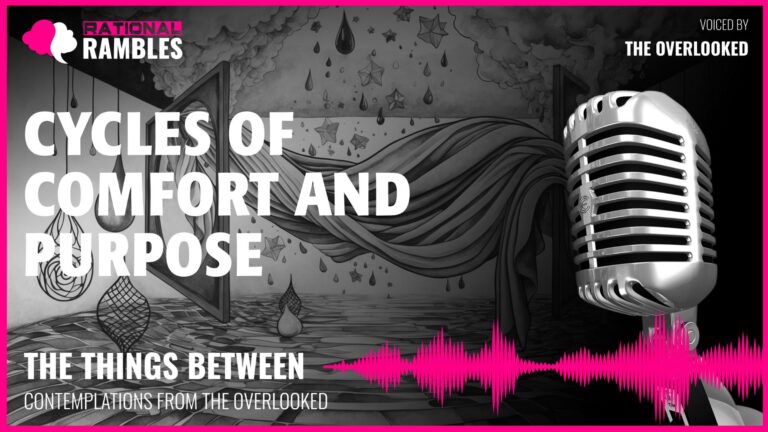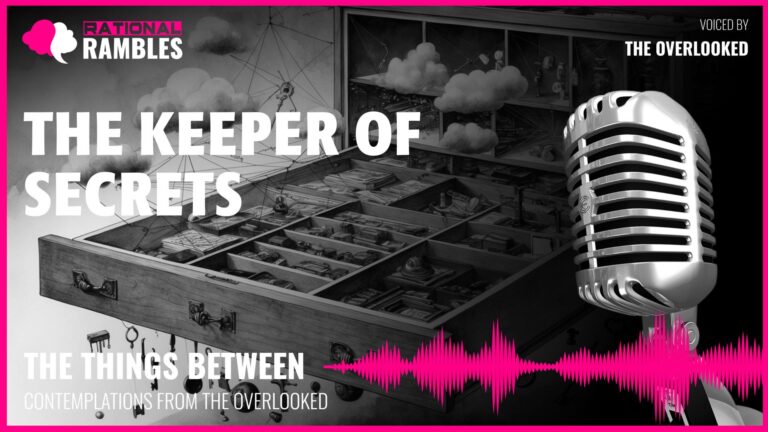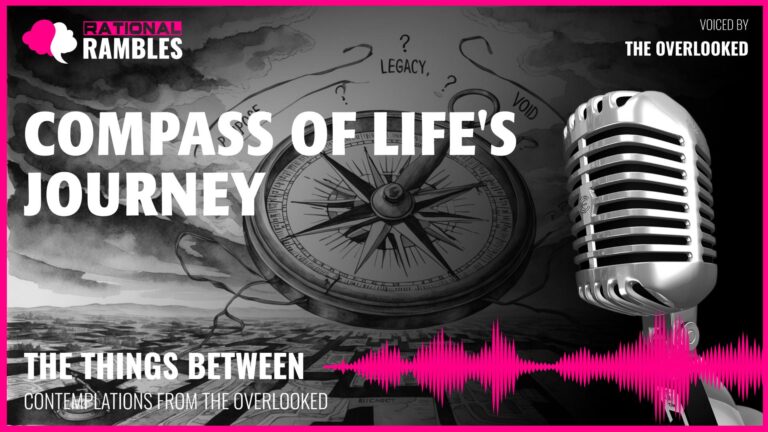Mirrors of Being: Perspective, Identity, and the Nature of Truth
Introduction
What does it mean to see and be seen? The nature of reflection—both physical and metaphorical—offers a profound entranceway into some of philosophy’s most enduring questions. When we gaze into a reflective surface, we encounter a paradox: we see ourselves, yet this image is simultaneously us and not us, present and absent, true and reversed. This philosophical tension extends beyond the physical phenomenon into the realms of epistemology, identity, and ontology.
Reflection serves as both metaphor and mechanism for human self-knowledge. Since antiquity, philosophers have employed the mirror as a central metaphor for consciousness, self-awareness, and the complexities of perception. From Plato’s reflective surfaces in his allegory of the cave to contemporary explorations of selfhood in the digital age, the act of reflection continues to illuminate our understanding of existence.
This article explores the multifaceted philosophical dimensions of reflection, examining how the interplay between perceiver and perceived shapes our understanding of truth, identity, time, and consciousness. Through historical, phenomenological, and metaphysical lenses, we will contemplate what it means to reflect and be reflected, and how this fundamental experience informs our relationship with reality itself.
The Ontology of Reflection
What is the nature of a reflection? This seemingly simple question opens into profound ontological territory. A reflection exists in a curious metaphysical state—physically present yet fundamentally dependent, real yet derivative, accurate yet reversed. This ontological ambiguity has fascinated philosophers since ancient times.
Presence and Absence
A reflection manifests a unique form of being—one characterized by both presence and absence. When light bounces off a reflective surface, it creates an image that appears to occupy space beyond the surface, yet this space contains no physical object. The reflection is visually present but materially absent. This paradox challenges our conventional understanding of existence.
Sartre’s concepts of being-in-itself and being-for-itself can illuminate this phenomenon. The reflective surface (the mirror) exists as being-in-itself—complete, non-conscious, and defined. The reflection, however, exists more like consciousness itself—characterized by absence, negation, and dependency. A reflection, like consciousness, is defined not by what it is but by what it is not; it is a kind of nothingness that nevertheless appears.
This duality of presence and absence parallels our own existential condition. We too exist in this tension between material presence and transcendent absence, between our concrete physical being and our self-conscious awareness that somehow exceeds pure materiality. Perhaps this explains our fascination with reflections—they externalize our own ontological paradox.
The Dependency Relationship
A reflection cannot exist independently; it requires both a reflective surface and something to reflect. This fundamental dependency raises questions about derivative forms of being. Is something less real because it depends on something else for its existence? Are reflections mere simulacra, or do they possess their own form of reality?
Plato might classify reflections as third-order imitations—copies of material objects that are themselves copies of eternal Forms. Yet reflections possess qualities that complicate this hierarchy. Unlike artistic representations, reflections change dynamically with their subjects, maintaining a direct, causal relationship with what they reflect. This immediate correspondence gives reflections a unique epistemological status—they are simultaneously less and more trustworthy than other representations.
The dependency of reflections also illuminates broader questions about relational existence. Many philosophers, particularly those in Eastern traditions, argue that all beings exist interdependently. The Mahayana Buddhist concept of pratītyasamutpāda (dependent origination) suggests that nothing exists independently of its relationships to other things. From this perspective, the dependent nature of reflections is not an ontological deficiency but rather reveals a fundamental truth about all existence.
The Question of Origin
The ontological status of reflections prompts us to consider the nature of creation itself. When light strikes a reflective surface and produces an image, what exactly has occurred? Has something new come into being, or has an existing thing merely been transformed? Is reflection a creative act or merely a passive reception?
This question parallels debates in philosophy of mind about whether the mind actively constructs reality or passively receives it. Kant’s transcendental idealism suggests that the mind actively structures raw sensory data according to innate categories. Similarly, we might ask whether a reflective surface merely receives light or actively structures it into a new form of being.
The nature of reflection thus invites us to reconsider fundamental categories of being and becoming. It challenges the binary distinction between creation and reception, suggesting instead a process of transformation that is neither wholly active nor wholly passive—a process that may be paradigmatic of existence itself.
The Epistemology of Reflections
Reflections occupy a complex position in our pursuit of knowledge. They simultaneously reveal and distort, offering insights while introducing their own epistemological challenges. This duality makes them powerful tools for exploring the nature of truth itself.
Truth and Reversal
The most obvious epistemological peculiarity of reflections is their reversal of left and right. This inversion creates a paradox: reflections show us exactly what is before them, yet they transform it in the process. This raises a fundamental question: Does this transformation constitute a distortion of truth, or merely an alternative perspective on it?
This question echoes broader philosophical debates about the nature of truth. Correspondence theories of truth, which define truth as accurate representation of reality, might consider reflections somewhat deficient due to their inversions. Coherence theories, which define truth in terms of internal consistency, might be less troubled by this reversal as long as the internal relationships within the image remain consistent. Pragmatic theories, which define truth in terms of usefulness, might judge reflections by their practical value in helping us navigate reality.
The reversal inherent in reflections suggests that even direct perception involves transformation. As Kant argued, we never access the thing-in-itself (the noumenon), but only the thing-as-it-appears-to-us (the phenomenon). All perception involves mediation and transformation. The mirror’s inversion simply makes explicit what is implicit in all epistemological processes: that representation always involves translation from one state to another.
Mediation and Direct Experience
Reflections occupy an interesting middle ground between direct and indirect knowledge. When we see something reflected, we are seeing the actual object, yet through a medium that introduces its own properties into the experience. This raises questions about mediated knowledge more broadly.
How direct is any perception? All perception involves mediation through sensory organs and neural processing. Even what we consider direct sight involves light reflecting off objects, entering our eyes, triggering photochemical reactions, and being processed by our visual cortex. From this perspective, mirrors simply add one more reflective surface to an already mediated process.
Yet there seems to be an important distinction between seeing something directly and seeing its reflection. The reflection introduces a spatial displacement—we look in one direction to see something located in another. This spatial reorientation creates a psychological distance that affects our relationship with what we perceive. It allows us to see ourselves as others might see us, introducing a form of perspective that would otherwise be impossible.
This capacity for reorientation makes reflections powerful tools for expanding knowledge. They allow us to see around corners, observe ourselves, and gain perspective on things too dangerous or difficult to view directly. In this way, the very properties that make reflections “indirect” also make them epistemologically valuable.
The Limits of Reflection
Despite their utility, reflections have inherent epistemological limitations. They show only surfaces, not interiors. They capture appearance, not essence. They are limited by their angle and position. These limitations mirror broader epistemological constraints on human knowledge.
The surface-oriented nature of reflections parallels the phenomenological emphasis on appearances as the basis of knowledge. As Husserl argued, we can only know things as they appear to consciousness, not as they might exist beyond appearance. The mirror’s fixation on surfaces serves as a reminder of this fundamental limitation.
Additionally, reflections are constrained by perspective. A mirror can only show what lies within its field of reflection, from a particular angle. This limitation echoes Nietzsche’s perspectivism—the view that all knowledge is necessarily from a particular viewpoint, and that the idea of a “view from nowhere” is illusory. The very concept of an omniscient perspective—a view that captures all possible viewpoints simultaneously—seems logically impossible.
These limitations suggest that while reflections can enhance our knowledge, they cannot deliver the kind of absolute, perspective-free knowledge that philosophers since Plato have sought. Rather than undermining the value of reflective knowledge, however, this recognition invites a more nuanced epistemology that embraces the partial, perspectival nature of all understanding.
Identity and Self-Recognition
Perhaps nowhere are the philosophical implications of reflection more profound than in the realm of identity and self-recognition. The experience of seeing oneself reflected raises fundamental questions about selfhood, recognition, and the relationship between appearance and essence.
The Mirror Stage and Self-Recognition
The moment of self-recognition in a mirror represents a developmental milestone with deep philosophical implications. Psychoanalyst Jacques Lacan’s concept of the “mirror stage” identifies this moment—typically occurring between 6 and 18 months of age—as foundational to identity formation. When infants recognize themselves in a mirror, they begin to develop a sense of themselves as unified beings, distinct from others and the environment.
This moment of recognition, however, contains a fundamental alienation. The child identifies with an image that is simultaneously self and other, present and absent, controlled and autonomous. This creates what Lacan calls a “méconnaissance” (misrecognition)—the child’s sense of self becomes irrevocably tied to an external image that can never fully capture their embodied experience.
This primary split between experienced self and observed self continues throughout life. When we look in mirrors, we see ourselves as objects in the world rather than as the subjective center of experience. This objectification creates a distance that enables reflection in both senses of the word—we can both see and think about ourselves from a quasi-external perspective.
The philosopher Maurice Merleau-Ponty explored this tension between the lived body (corps propre) and the observable body (corps objectif). The mirror facilitates a uniquely direct encounter between these two aspects of embodiment, allowing us to reconcile our internal sense of self with our external appearance in the world.
Identity Over Time
Reflections also raise profound questions about identity through time. When we look in the same mirror over years or decades, we confront continuity and change simultaneously. The gradual transformation of our appearance raises questions about what constitutes the self across temporal change.
This problem of personal identity has occupied philosophers from John Locke to Derek Parfit. Is identity based on psychological continuity, bodily continuity, or some combination? The mirror shows us bodily continuity and change, but says nothing directly about psychological continuity. The disjunction between our sense of being “the same person” internally while appearing differently externally creates a philosophical tension that reflections make visceral.
The shock sometimes experienced when seeing oneself aged in a mirror highlights what philosopher Galen Strawson calls the “narrative self” versus the “episodic self.” The narrative self maintains a continuous life story, while the episodic self experiences life as a series of discrete moments. The mirror confronts the narrative self with episodic evidence that can either reinforce or disrupt our ongoing self-narrative.
Performance and Authenticity
Mirrors are intimately connected with self-presentation and performance. We use them to construct the face we present to the world—adjusting our appearance, rehearsing expressions, and practicing the embodiment of social roles. This raises questions about authenticity and performance in identity construction.
Erving Goffman’s dramaturgical theory of social interaction suggests that all social life involves performance—the presentation of different versions of self for different audiences and contexts. Mirrors facilitate what he calls “backstage” preparation for “frontstage” performances. They enable the rehearsal and refinement of our social presentations.
This rehearsal aspect of mirrors raises questions about authenticity. Is the carefully composed self more or less authentic than the spontaneous self? Is the distinction between performance and authenticity itself artificial? Philosophers like Sartre suggest that authenticity lies not in some “natural” self beneath performance, but in honestly acknowledging the performative nature of all identity.
Contemporary philosopher Judith Butler extends this insight in her theory of performativity, arguing that gender identity is constituted through repeated performances rather than expressing a pre-existing inner essence. From this perspective, mirror practices don’t simply express identity but actively participate in its ongoing constitution.
Recognition and Misrecognition
The experience of recognition in mirrors involves both confirmation and alienation. We recognize ourselves, yet the image remains separate from us. This duality parallels Hegel’s account of self-consciousness as arising through recognition by another consciousness. For Hegel, we come to know ourselves through being recognized by others, yet this recognition always involves a tension between autonomy and dependence.
The mirror offers a simplified version of this dialectic—we recognize ourselves, yet this recognition comes through an externalized image that is both us and not us. Like Hegelian recognition, mirror recognition involves both confirmation and alienation, both independence and dependence.
This dynamic extends to social recognition more broadly. Philosopher Charles Taylor argues that identity is fundamentally dialogical—shaped through our interactions with others. The mirror image serves as a kind of simplified other, allowing us to see ourselves as we might appear to those around us. This external perspective is crucial for developing self-understanding.
Yet mirrors can also facilitate misrecognition. Just as Lacan’s mirror stage involves a fundamental misrecognition of the unified image for the fragmented experience of self, our ongoing mirror interactions may reinforce distorted self-perceptions. The prevalence of body dysmorphia and related disorders suggests that the relationship between mirror image and self-perception is both powerful and potentially problematic.
Time, Change, and Permanence
Reflections occupy a curious temporal position—they exist only in the present moment, yet they participate in our experience of time’s passage. This temporal dimension of reflection raises profound questions about change, permanence, and the nature of time itself.
The Eternal Present of Reflection
A reflection has no past or future—it exists only in the present moment, changing instantly as what it reflects changes. This immediate responsiveness makes reflections uniquely timely; they never show what something was or will be, only what it is right now. This temporal immediacy stands in contrast to other forms of representation like photography or painting, which freeze moments in time.
This presentness of reflection parallels philosophical approaches to time that emphasize the reality of the present moment. Augustine famously argued that only the present truly exists—the past exists only as present memory, the future only as present anticipation. Similarly, reflections manifest only the present reality, with no independent existence beyond the moment of reflection.
Yet this apparent temporal simplicity conceals complexity. The light that creates a reflection takes time—however infinitesimal—to travel from object to reflective surface to eye. What we see in a reflection is therefore always the immediate past, never the actual present. This minimal delay reminds us that all perception involves time, challenging the very concept of an accessible “now.”
Witnesses to Change
While individual reflective moments exist only in the present, reflective surfaces endure through time, witnessing countless changes in what they reflect. A mirror that has existed for centuries has reflected fashion’s evolution, technological development, cultural transformation, and the aging of generations. This witnessing capacity makes reflective surfaces powerful symbols of time’s passage.
Unlike human memory, which selectively preserves and transforms experiences, reflective surfaces have no memory of what they’ve reflected. Each reflection replaces the previous one completely. This lack of retention creates a curious tension—reflective surfaces witness everything but remember nothing. They are perfect witnesses in their accuracy but imperfect in their inability to preserve what they witness.
This tension between witnessing and forgetting raises questions about the relationship between memory and identity. If, as Locke suggested, personal identity depends on memory connecting past and present experiences, then reflective surfaces lack the conditions for identity through time. Despite their physical continuity, they have no experiential continuity. This absence highlights the importance of memory in constituting temporal existence.
Aging and Impermanence
When we observe ourselves in mirrors over time, we confront our own aging—the gradual transformation of appearance that signals our impermanence. This confrontation with change raises philosophical questions about identity persistence through physical transformation.
The Buddhist concept of anicca (impermanence) suggests that change is the only constant, and that suffering arises from attachment to what inevitably changes. From this perspective, mirrors offer a direct encounter with impermanence, potentially facilitating the wisdom that comes from acknowledging transience.
Yet mirrors themselves are not immune to time. Their surfaces tarnish, their backings deteriorate, their frames warp. These changes in the reflective medium itself add another layer to their temporal significance. A vintage mirror with spotted silver or a subtle crack reflects differently than a new one—its history becomes part of what it shows. The aging of the reflective surface itself becomes part of the reflection, adding temporal depth to what might otherwise be purely present.
This deterioration of reflective surfaces offers a material manifestation of entropy—the tendency of ordered systems to become disordered over time. The gradual breakdown of perfect reflection parallels the broader thermodynamic principle that all structured systems eventually deteriorate. The tarnished mirror thus becomes a physical embodiment of time’s fundamental direction.
The Paradox of Reflection and Duration
Henri Bergson distinguished between objective, measurable time (temps) and subjectively experienced duration (durée). Reflection occupies an interesting position relative to this distinction. The physics of reflection occurs in measurable time—light traveling at a specific speed. Yet our experience of seeing ourselves reflected often involves a heightened awareness of subjective duration.
When we contemplate our reflection, especially over time, we may experience what Bergson called “duration”—the interpenetration of past and present in consciousness. The present reflection mingles with memories of past reflections and anticipations of future ones, creating a rich temporal experience that transcends the present moment.
This capacity to trigger temporal consciousness makes mirrors powerful tools for philosophical reflection on time itself. They offer a unique conjunction of absolute presentness and historical resonance—showing us only the now, yet triggering awareness of temporal passage. This conjunction helps explain why mirrors feature so prominently in philosophical and literary explorations of time, from Lewis Carroll’s through-the-looking-glass temporal inversions to Jorge Luis Borges’ infinite regresses.
Perception, Light, and Visibility
At its physical core, reflection involves the interaction between light and surfaces. This fundamental relationship between illumination and visibility raises profound philosophical questions about perception, knowledge, and the conditions of appearance.
The Metaphysics of Illumination
Light has served as a central metaphor for knowledge and truth across philosophical traditions. From Plato’s sun analogy in the Republic to Enlightenment imagery, light represents the condition for both physical and intellectual visibility. Reflective surfaces participate in this metaphorical tradition by redirecting light, making visible what would otherwise remain unseen.
The dependence of reflection on light illustrates a fundamental principle: nothing can be reflected without illumination. This dependency parallels epistemic conditions more broadly—knowledge requires some form of intellectual “light” that makes its objects discernible. Just as physical objects require illumination to be reflected, concepts require clarity to be understood.
The quality and direction of light significantly affect what appears in a reflection. Different forms of illumination—natural sunlight, candlelight, fluorescent light, LED light—create different reflective experiences. This variability suggests that the conditions of appearance are not neutral but actively shape what appears. This insight extends to epistemology: the frameworks and conditions of knowing shape what can be known.
Visibility and Invisibility
A perfect mirror achieves its function through its own invisibility. When we look at an ideal reflective surface, we see only what it reflects, not the surface itself. This self-effacement of the medium raises questions about mediation in knowledge and perception more broadly.
Media theorist Marshall McLuhan famously claimed that “the medium is the message,” suggesting that means of communication shape content in fundamental ways. Yet reflective surfaces seem to contradict this principle through their transparency. Their message appears to be precisely what they reflect, not their own materiality.
This apparent transparency, however, is never complete. Real mirrors have frames, edges, flaws, and material properties that remind us of their presence. Even the most perfect mirror reveals its existence through the very act of reflection—the reversal of images announces the presence of the reflective medium. This partial visibility parallels what philosopher Don Ihde calls “technological transparency”—the way technologies fade from awareness during use while still structuring experience.
The tension between visibility and invisibility in reflective surfaces illuminates broader questions about mediation. All perception and knowledge involve mediating structures that both enable and shape what can be perceived or known. The partial invisibility of these structures—from sensory organs to conceptual frameworks—creates the illusion of immediate access while subtly determining what appears and how.
Angles of Perception
Reflection is geometrically determined—the angle of incidence equals the angle of reflection. This mathematical precision means that what appears in a reflection depends entirely on the relative positions of object, surface, and observer. Move any element, and the reflection changes accordingly.
This positional sensitivity highlights the perspectival nature of all perception. What we perceive depends on where we stand in relation to what we perceive. This physical truth extends metaphorically to intellectual, cultural, and historical perspective—our viewpoint determines what we can see and how it appears to us.
The geometric predictability of reflection also enables strategic positioning to see what would otherwise remain hidden. Angled mirrors allow us to see around corners or behind us. This capacity to redirect sight challenges the assumption that perception must be direct to be reliable. Sometimes the most revealing perspective comes from intentional indirection—a physical analog to the philosophical value of approaching questions obliquely.
The relationship between angle and reflection also creates the possibility of blind spots—positions from which certain objects cannot be reflected given the available reflective surfaces. These physical blind spots parallel cognitive and cultural blind spots—aspects of reality that remain invisible from particular perspectives despite their objective presence.
Distortion and Clarity
Not all reflective surfaces reflect with equal clarity. Some magnify, some minimize, some distort through curvature or surface irregularity. These variations in reflective quality raise questions about the relationship between distortion and revelation in perception more broadly.
Perfectly flat mirrors provide the most geometrically accurate reflections, yet even these involve left-right reversal. Curved mirrors distort in predictable ways—convex mirrors compress and expand the field of vision, while concave mirrors focus and invert beyond certain distances. These predictable distortions can be useful—revealing more information through compression or providing magnification for detailed examination.
This functional aspect of distortion challenges the assumption that accuracy requires perfect correspondence. Sometimes distortion reveals truth more effectively than precise reproduction. This insight applies beyond physical reflection to representation broadly—maps, models, theories, and narratives often reveal through strategic simplification or exaggeration.
The various forms of reflective distortion also illuminate the concept of perceptual affordances—the possibilities for perception that different environments provide. Just as different reflective surfaces afford different kinds of seeing, different perceptual environments (natural, built, digital) afford different modes of awareness. The philosophical question becomes not simply what is true, but what kinds of truth different perceptual configurations make available.
Truth, Illusion, and Perspective
The phenomenon of reflection stands at the intersection of truth and illusion. It presents images that are simultaneously accurate and deceptive, raising profound questions about the nature of truth and the role of perspective in constituting reality.
The Paradox of Truthful Reversal
The most obvious “distortion” in mirror reflections is the reversal of left and right. This inversion creates a curious epistemological situation: mirrors show exactly what is before them, yet they transform it in the process. This raises a fundamental question: Does this transformation constitute a falsification of reality, or merely an alternative perspective on it?
This question echoes broader philosophical debates about perspective and truth. Is there a “view from nowhere” that represents absolute truth, as Thomas Nagel questioned? Or is all truth necessarily perspectival, as Nietzsche argued? The mirror’s reversal reminds us that even the most direct perception involves a specific viewpoint with its own transformative properties.
The reversal also highlights the arbitrary nature of our directional concepts. Left and right are not intrinsic properties of objects but relational terms dependent on orientation. The mirror reveals this relativity by presenting an equally valid alternative orientation. This reminder of conceptual relativity extends beyond spatial orientation to other seemingly natural categories that may actually be conventional or perspectival.
Trompe-l’œil and Reality Testing
Reflective surfaces can create compelling illusions. Strategically placed mirrors can make spaces appear larger, create apparent doorways where none exist, or seemingly multiply objects through endless reflection. These illusions raise questions about the relationship between appearance and reality—a central concern of philosophy since Plato’s cave allegory.
Yet mirrors also function as tools for reality testing. We use reflective surfaces to check our appearance, confirm what we’ve seen, or extend our visual field around corners. This dual capacity to both deceive and verify makes reflection a rich philosophical paradox—capable of both undermining and supporting our confidence in perception.
This duality parallels the broader epistemological tension between skepticism and trust in appearance. As Descartes noted in his Meditations, our senses sometimes deceive us, yet they remain our primary means of accessing reality. The mirror’s simultaneous reliability and potential for deception exemplifies this tension.
The mirror illusion differs from other perceptual illusions in a crucial way: once recognized as a reflection, it no longer deceives. Unlike persistent optical illusions that continue to appear illusory even when we know their true nature, mirror illusions transform into accurate reflections once we understand what we’re seeing. This capacity for illusion to become truth through understanding offers a model for how knowledge can transform perception.
Multiple Perspectives and Infinite Regression
When two mirrors face each other, they create an infinite regression of reflections—each mirror reflecting the reflection in the other mirror, theoretically continuing to infinity. This phenomenon raises profound questions about recursion, perspective, and the nature of infinity.
The infinite regression of facing mirrors creates a visual experience of infinity within finite space—a paradox that parallels mathematical and philosophical concepts of actual infinity. The mirrors create a visual instantiation of recursion, with each reflection containing itself reflected within the other mirror.
This infinite multiplication of perspectives also serves as a metaphor for intersubjectivity—the way consciousness can reflect on itself reflecting on itself, creating an internal infinite regression analogous to the external visual one. When we think about our own thinking, we enter a similar recursive structure, potentially extending to infinite levels of meta-cognition.
The infinite regression also demonstrates how a finite system (two mirrors) can generate infinite complexity through recursive interaction. This principle extends to other complex systems—from mathematics to consciousness to social structures—where recursive application of simple rules generates emergent complexity.
Culture and The Construction of Truth
Different cultures and historical periods have attributed different meanings and powers to reflective surfaces. Some traditions cover mirrors after death to prevent spirits from becoming trapped; others associate mirrors with vanity or narcissism; still others use them in divination practices. These varied cultural interpretations remind us that the “truth” of reflections is partly constructed through cultural frameworks.
This cultural dimension of reflection parallels broader social constructionist approaches to knowledge. As Peter Berger and Thomas Luckmann argued in The Social Construction of Reality, what counts as knowledge is fundamentally shaped by social processes. The meaning of reflection—whether as accurate representation, spiritual portal, or narcissistic indulgence—emerges through cultural interpretation rather than inhering in the physical phenomenon itself.
The seven years of bad luck traditionally associated with breaking mirrors exemplifies how cultural frameworks transform physical phenomena into meaningful events. The breaking of a reflective surface acquires significance far beyond its material consequences through cultural interpretation. This transformation of physical events into meaningful occurrences characterizes human experience more broadly.
Contemporary digital “reflections” extend this cultural dimension. Selfies, video calls, and social media profiles create new forms of self-reflection mediated through cultural frameworks and technological constraints. These digital reflections raise new questions about authenticity, representation, and the relationship between image and identity in the contemporary world.
Intersubjectivity and Mutual Recognition
While mirrors most obviously facilitate self-reflection, they also create unique possibilities for intersubjective experience. When multiple people view themselves or each other in the same reflective surface, complex dynamics of mutual recognition and shared perception emerge.
Shared Spectatorship
When two people stand before a mirror together, they share a unique perceptual experience—simultaneously seeing themselves, each other, and their relationship within a single frame. This creates a complex layering of perspectives that differs from direct face-to-face interaction.
In direct interaction, I see you while you see me. In shared mirror-gazing, I see both myself and you, while knowing you see both yourself and me. This creates a mutual awareness not just of each other but of how we appear together within a shared visual field. The mirror facilitates a kind of “third-person” perspective on the relationship itself.
This shared spectatorship creates unique possibilities for coordination and attunement. Dance studios use mirrors precisely for this purpose—allowing dancers to coordinate their movements by seeing themselves within the ensemble. The shared reflective field creates a common reference point that facilitates alignment between individual and group.
Philosophically, this shared mirror experience offers a concrete manifestation of what phenomenologists call “intersubjectivity”—the mutual awareness of self and other as subjects sharing a world. The mirror makes visible the intersubjective field itself, not just the individuals within it.
The Gaze Reflected
When we see another person looking at us in a mirror, we encounter their gaze indirectly. This creates a unique variation on what Sartre described as “the look”—the experience of being seen by another that makes us aware of ourselves as objects in their perceptual field.
In direct interaction, meeting another’s gaze creates immediate, often intense awareness of being seen. In mirrored interaction, this gaze is mediated through the reflective surface, creating both distance and a curious doubling—I see you seeing me, but through a displaced spatial relationship where we may both appear to be looking at someone else.
This displacement can reduce the intensity of direct eye contact, potentially facilitating interactions that might otherwise feel too intimate or confrontational. Clinicians sometimes use this technique with patients who struggle with direct eye contact, allowing connection through the mediated gaze in a mirror.
The reflected gaze also creates unique possibilities for power dynamics. Surveillance often employs one-way mirrors to create asymmetric visibility—the observed cannot see the observer. This arrangement concretizes power relationships through control of the gaze, exemplifying what Michel Foucault identified as the connection between visibility and power in modern institutions.
Recognition and Difference
Mirrors can highlight both similarities and differences between people. When individuals of different heights, ages, or appearances stand before a mirror together, their differences become visually apparent within a unified field. This simultaneous visualization of sameness and difference creates unique opportunities for recognizing both shared humanity and individual particularity.
This visual juxtaposition parallels philosophical approaches to difference and recognition. Paul Ricoeur’s concept of “oneself as another” suggests that identity forms through a dialectic between sameness and difference. The mirror concretizes this dialectic by showing different individuals within a single frame, highlighting both what they share and what distinguishes them.
The mirror’s capacity to show differences within relationships makes it a powerful tool for examining social categories. When people marked by different social positions—gender, race, age, ability status—appear together in reflection, the mirror can make visible power dynamics and structural inequalities that might otherwise remain implicit. This visual revelation can facilitate critical awareness of social positioning.
At the same time, mirrors can reveal unexpected similarities across apparent differences. Features, expressions, or movements that cross categorical boundaries become visible when diverse individuals share reflective space. This visual evidence of commonality can counteract essentialist thinking that overemphasizes categorical difference.
Empathy and Perspective-Taking
Mirrors facilitate a unique form of perspective-taking. By showing us how others see us, they help bridge the gap between first-person and third-person perspectives. This capacity for shifting viewpoint underlies empathy and mutual understanding.
Developmental psychologists have found that mirror self-recognition typically precedes the ability to take another’s perspective. Recognizing oneself as an object in the world seems to scaffold the cognitive ability to understand that others have different perceptual and mental perspectives. The mirror thus plays a role in developing what philosophers and psychologists call “theory of mind”—the understanding that others have minds with their own contents.
Beyond individual development, shared mirror experiences create opportunities for expanded perspective-taking. Seeing ourselves as we appear to others helps us understand how our actions and expressions might be perceived. This external perspective can increase social awareness and responsive interaction.
At its most profound, this mirror-facilitated perspective-taking approaches what philosopher Adam Smith called the “impartial spectator”—the capacity to view oneself and one’s situation from an imagined external viewpoint. This ability to step outside our immediate perspective and see ourselves as others might see us forms the basis for moral judgment and social coordination.
The Ethics of Reflection
The phenomenon of reflection raises not only metaphysical and epistemological questions but ethical ones as well. How should we relate to reflections—both literal mirrors and metaphorical reflective practices? What ethical principles might guide our engagement with our own image and the images of others?
Narcissism and Self-Knowledge
The myth of Narcissus, who fell in love with his own reflection and wasted away in self-absorption, has given us our modern concept of narcissism. This cautionary tale suggests an ethical danger in excessive mirror-gazing—the possibility of becoming trapped in self-reference to the exclusion of genuine engagement with others and the world.
However, the Delphic maxim “know thyself” suggests an ethical imperative that seems to require some form of self-reflection. This tension between narcissistic self-absorption and necessary self-knowledge creates an ethical question: How much and what kind of self-reflection conduces to ethical development?
Philosophers have approached this question differently. Aristotle emphasized self-knowledge as essential to virtue, while Buddhist traditions warn against reinforcing the illusion of a separate self through excessive self-focus. Contemporary virtue ethics suggests that character development requires honest self-assessment without obsessive self-concern.
The mirror itself offers a model for healthy self-reflection—it shows us ourselves accurately but does not trap our gaze. We look, gain information, and move on. This instrumental relationship with our reflection suggests an ethical approach to self-knowledge: engage with enough attention to gain insight, but without becoming captivated by or identified with the image.
Representation and Responsibility
Mirrors raise ethical questions about representation and responsibility. When we use mirrors to present ourselves to others through careful grooming and self-presentation, what obligations govern this process? Is there an ethical duty of authentic self-presentation? Or do we have legitimate interests in controlling how we appear?
These questions extend to broader issues of representation in contemporary life. Digital “mirrors” like social media profiles raise similar ethical questions about authenticity, curation, and the responsibilities we have in presenting ourselves and representing others. The ethics of representation involves complex balancing of competing values—honesty, privacy, autonomy, and care for how our representations affect others.
The concept of testimonial justice, developed by philosopher Miranda Fricker, offers one approach to these questions. Just as we can wrong others by distorting their testimony, we might wrong ourselves or others through distorted representation. Creating or maintaining misleading reflections—literal or metaphorical—can constitute a failure of epistemic responsibility.
Yet absolute transparency may not be ethically ideal either. Privacy theorists argue for the importance of maintaining control over how and when we are represented. The ethical use of reflection may involve judicious management of visibility rather than either complete exposure or systematic distortion.
Bearing Witness and Compassionate Attention
Reflective surfaces bear witness to what appears before them without judgment or avoidance. They reflect the beautiful and the ugly, the welcome and the unwelcome, with equal fidelity. This capacity for neutral, comprehensive attention suggests an ethical ideal of bearing witness that transcends both sentimental compassion and cold detachment.
Moral philosophers from David Hume to Martha Nussbaum have emphasized the importance of accurate perception in ethics. Before we can respond appropriately to others’ needs or suffering, we must first see them clearly. The mirror’s impartial reflection offers a metaphor for this ethical attentiveness—taking in reality as it is, without defensive distortion or wishful thinking.
Buddhist practices of mindfulness similarly emphasize non-judgmental awareness as foundational to ethical action. The mirror-like mind reflects experience without clinging to the pleasant or rejecting the unpleasant. This equanimous attention creates space for wise response rather than automatic reaction.
However, unlike actual mirrors, ethical attention is not passive but actively engaged. The ideal is not detached observation but what philosopher Simone Weil called “attention”—a focused, caring perception that is fully present to what it perceives without imposing preconceptions. This attentive presence forms the foundation for ethical response.
Justice and Recognition
Political philosopher Nancy Fraser argues that justice requires both fair distribution of resources and equitable recognition of identity and status. This latter dimension—recognition justice—connects deeply with the metaphor of reflection. To recognize someone justly is to “reflect” their self-understanding accurately rather than imposing distorted images upon them.
Misrecognition, in Fraser’s analysis, constitutes a form of injustice that damages both individuals and communities. When dominant groups consistently misrepresent subordinated groups, this distortion functions as a form of oppression. Just as a warped mirror fails in its function by distorting what it reflects, social institutions fail in justice when they systematically misrecognize people’s identities and contributions.
The ethics of reflection thus extends to social and political contexts. Just institutions and practices would mirror all people’s experiences with equal fidelity, rather than magnifying some while minimizing or distorting others. This equitable recognition forms a necessary condition for full participation in social life.
This political dimension of reflection ethics connects to broader questions about representation in media, arts, education, and governance. Who and what gets reflected in our shared cultural mirrors? Whose experiences remain invisible or distorted? These questions highlight how the metaphor of reflection extends from individual ethics to social justice.
Conclusion: Philosophical Reflections
The phenomenon of reflection offers a remarkably rich philosophical terrain, touching fundamental questions across ontology, epistemology, ethics, and aesthetics. From the metaphysics of presence and absence to the ethics of recognition, reflection illuminates central philosophical concerns while challenging us to rethink basic assumptions about perception, identity, and truth.
What emerges from this philosophical exploration is a recognition of reflection’s profound paradoxes. Reflections are simultaneously present and absent, accurate and reversed, revealing and concealing. They show us ourselves while maintaining an unbridgeable distance. They exist only in the present moment yet witness the passage of time. These paradoxes do not detract from reflection’s philosophical significance but rather constitute it.
The mirror offers a uniquely powerful philosophical metaphor precisely because it concretizes abstract philosophical problems. The relationship between appearance and reality, the perspective-bound nature of perception, the tension between identity and difference, the interplay between subject and object—all these philosophical puzzles find tangible expression in the everyday experience of seeing a reflection.
Beyond its theoretical richness, reflection also offers practical philosophical wisdom. It reminds us of the perspectival nature of all knowledge, encouraging epistemic humility. It reveals both our uniqueness and our participation in common humanity. It offers a model of attentive presence that receives reality without imposing distortion. These practical insights suggest that reflection is not merely an object for philosophical analysis but a resource for philosophical living.
Perhaps most fundamentally, reflection reminds us of philosophy’s essential character as a reflective enterprise. Philosophy does not simply look outward at the world; it bends consciousness back upon itself, examining the conditions and limitations of its own knowing. Like a mirror positioned to reveal what cannot be seen directly, philosophical reflection offers perspectives on experience that would remain invisible to straightforward observation.
In this sense, the mirror serves as both metaphor and model for philosophy itself—the discipline that helps us see ourselves seeing, know ourselves knowing, and understand the conditions of our own understanding. Through this recursive awareness, philosophy creates possibilities for transformation, allowing us to recognize and potentially revise the frameworks through which we constitute reality.
The humble act of looking into a mirror thus contains the seed of philosophy’s grandest ambition: to understand not just the world but our way of being in it, and through that understanding, to transform both the world and ourselves. In the mirror’s reflective depth, we encounter not just an image but an invitation—to the ongoing philosophical project of examining and renewing our relationship with reality itself.


